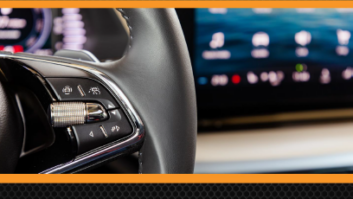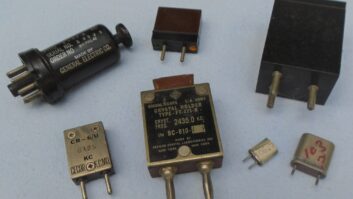Better late than never
Jan 1, 2006 12:00 PM, Chriss Scherer, editor
On Dec. 6, a press conference was held to announce the formation of the HD Digital Radio Alliance. This group, a joint effort of Bonneville International, Citadel Broadcasting, Clear Channel Radio, Cumulus, Emmis Communications, Entercom, Greater Media and Infinity Broadcasting, was created to coordinate the rollout of HD Radio, including coordinating the formats on multicast channels. In addition, the group hopes to work with automotive receiver manufacturers to include HD Radio receivers in vehicles at reasonable price points, and to jointly market HD Radio with receiver manufacturers and retailers. Beasley joined the effort 10 days later.
To do this, the nine broadcasters have committed more than $200 million in commercial inventory on their own stations in 2006 to promote HD Radio and its multicast capability. The group will also work together to coordinate its multicast programming to provide a broader choice in each market. The alliance also announced that the multicast channels initially will be commercial-free so that they might attract a wider audience.

Naturally, the official press release was full of warm and fuzzy remarks about how exciting the announcement is. Unfortunately, the announcement comes late in the game. This effort should have been launched at least three years ago. The first official HD Radio receiver was sold on Jan.6, 2004, in Cedar Rapids, IA. When that first radio was sold, consumers should have already been talking about HD Radio. Instead, I can walk into almost any consumer electronics store and get glassy-eyed stares when I ask for an HD Radio receiver. (What’s worse is that in most cases I am told that I want a satellite radio receiver.)
The holiday season that is now behind us was the perfect opportunity for HD Radio to make its mark. I did not see a single mention of any HD Radio-capable device in any of the advertising flyers. I didn’t hear about anyone wishing for an HD Radio receiver on the TV ads for Best Buy and Radio Shack. Feature-packed cell phones with media player capabilities, portable game consoles with media capabilities, and even simple media players were everywhere. Consumers have moved on while radio watched it all go by.
Terrestrial radio today needs to join the personal media revolution to stay competitive. Consumers are focused on the moment. Media players fit that perfectly. Radio is a long-haul commitment. When listeners tire of their pre-loaded playlists, they come back to radio. Unfortunately, these consumers do not have an HD Radio receiver to come back to.
The formation of the HD Digital Radio Alliance is a commendable effort. No one has done much to market HD Radio to the masses yet, so it’s worth the effort. (Besides, the NAB is busy telling listeners that radio should be free. Unfortunately, too many consumers believe that free means �having no value.�) If we’re going to make something happen with HD Radio, this is our chance.
I urge the alliance to focus on marketing HD Radio, but break out of the safe confines of our own spaces. Devoting $200 million in station ad inventory isn’t enough. Sure, run ads on the radio, but also run ads on TV, in the newspaper, in the movie theaters, on satellite radio, on portable games, via cell phones and anywhere else that a potential listener can be found. Effective marketing costs money, not unsold spots.
Satellite radio didn’t promote itself solely through unsold inventory on its own channels. Terrestrial radio shouldn’t rely solely on its own medium to create consumer desire for HD Radio.
On the hardware side, continue exploring the in-dash and tabletop radios, but also strike deals to have HD Radio tuners built into media players, cell phones and anything else that produces audio.
As I write this, the CES Convention is just days away. HD Radio is supposed to be featured by several exhibitors, and I’ll be looking to see what kind of presence is provided.
E-mail:[email protected]
Fax:913-514-7201












